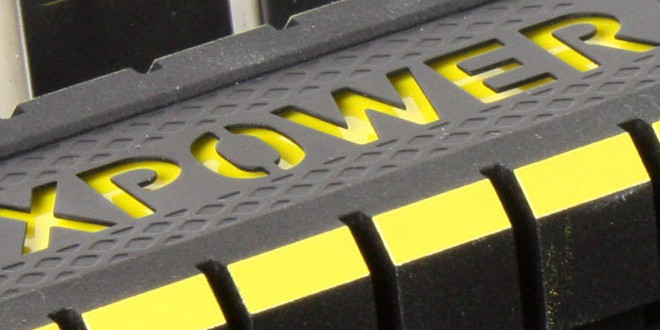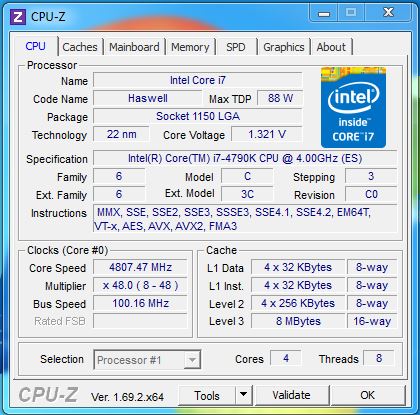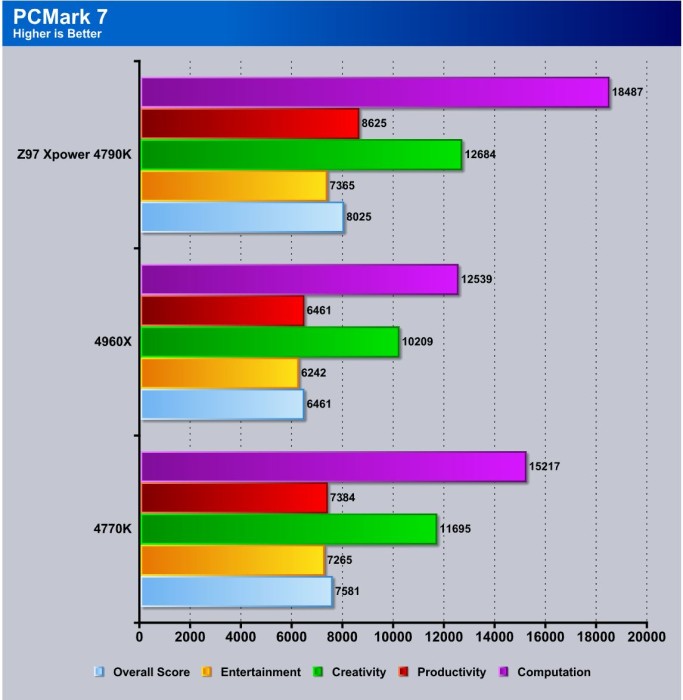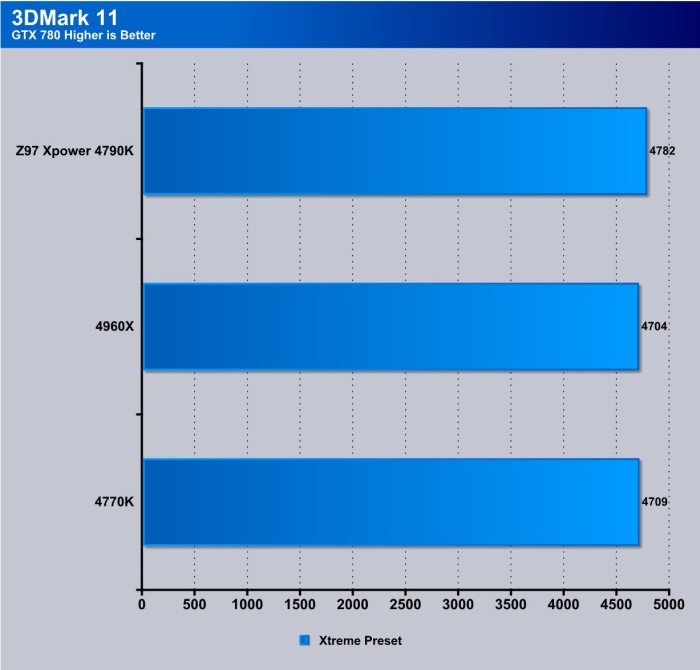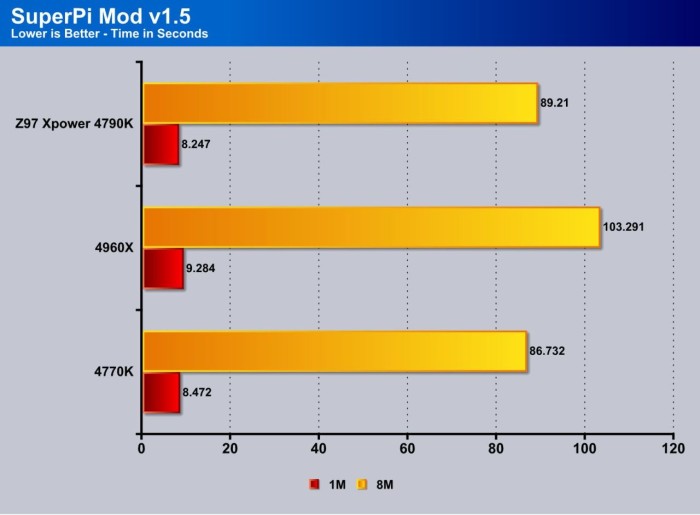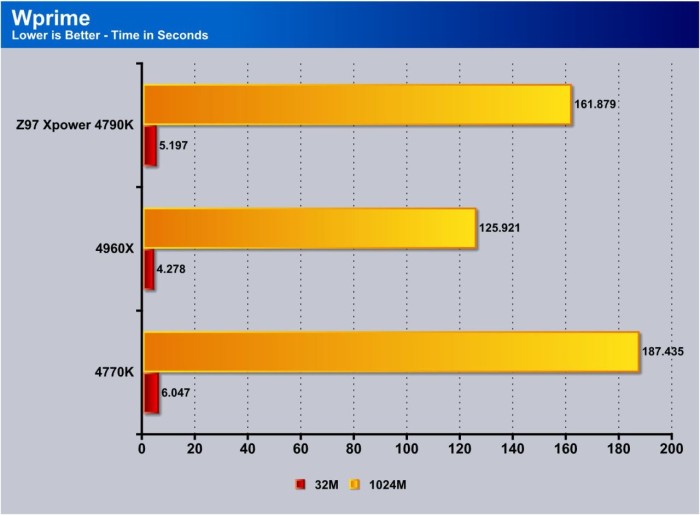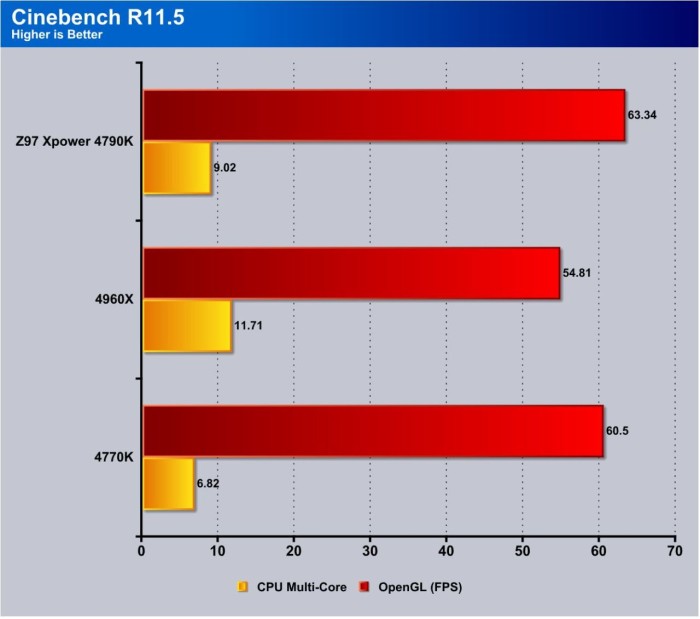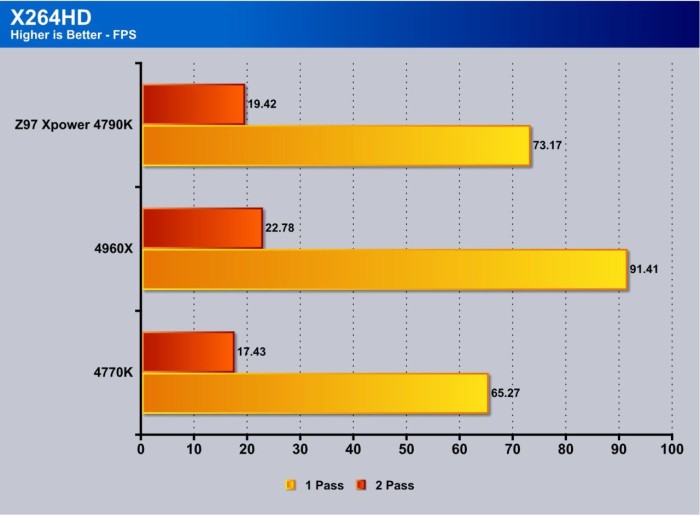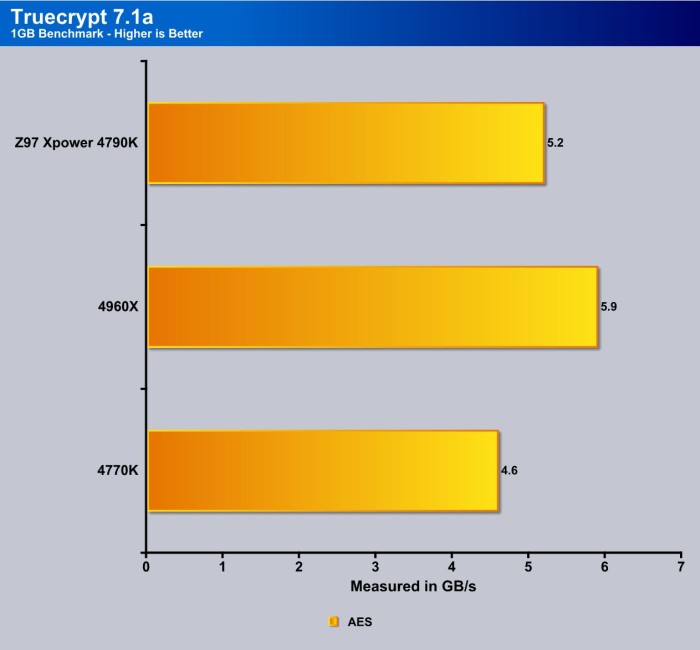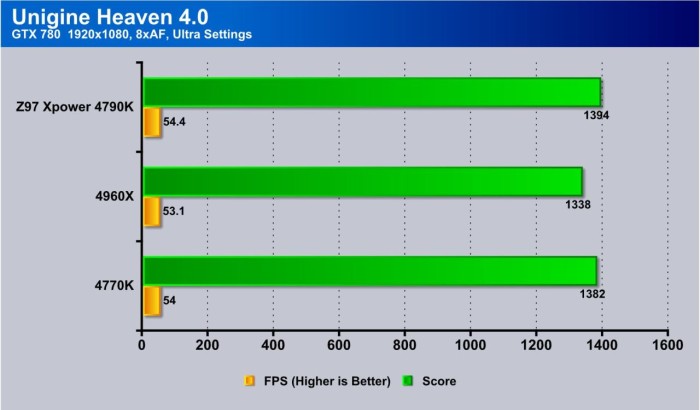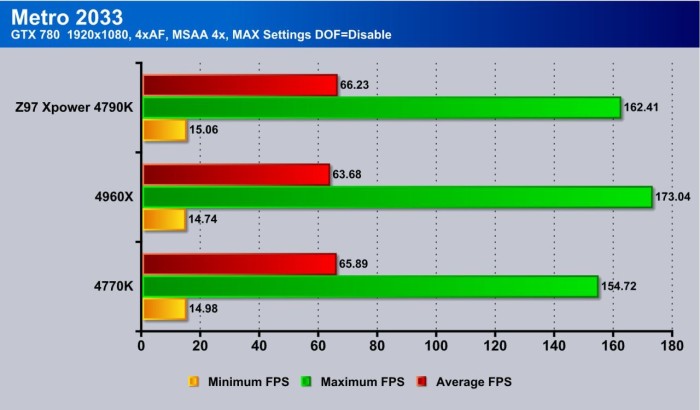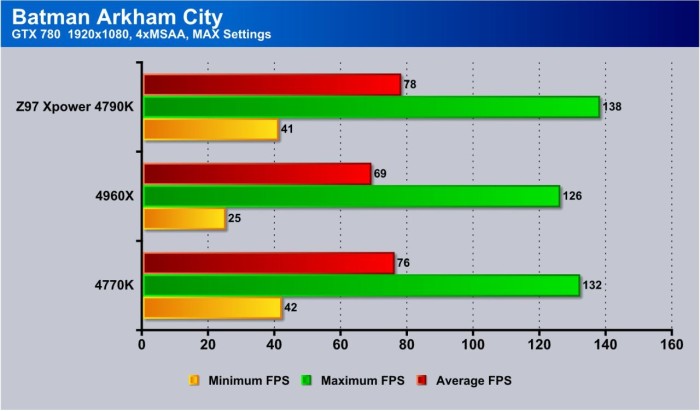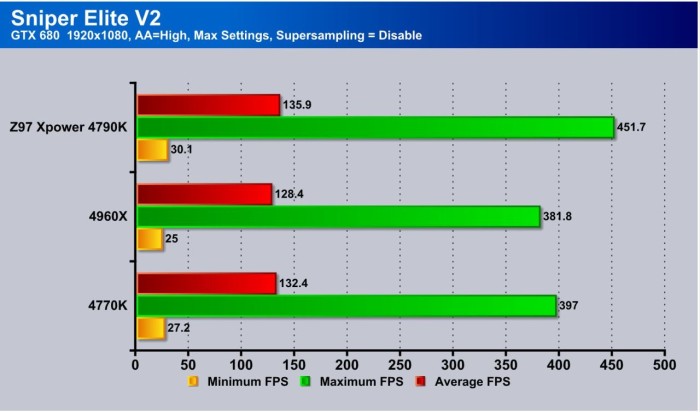Testing & Methodology

We’ve expanded our testing suite considerably since the X79 chipset release, and will continue to use the same methods for most of the motherboards and CPU’s we test. In the interests of thoroughness and accurate results, we run each test at least three times, and some tests more than that. We average the total of all the tests from each benchmark then report the average here.
The OS we use is Windows 7 Pro 64bit with all patches and updates applied. We also use the latest drivers available for the motherboard and any devices attached to the computer. We do not disable background tasks or tweak the OS or system in any way. We turn off drive indexing and daily defragging. We also turn off Prefetch and Superfetch. This is not an attempt to produce bigger benchmark numbers. Drive indexing and defragging can interfere with testing and produce confusing numbers. If a test were to be run while a drive was being indexed or defragged, and then the same test was later run when these processes were off, the two results would be contradictory and erroneous. As we cannot control when defragging and indexing occur precisely enough to guarantee that they won’t interfere with testing, we opt to disable the features entirely.
Prefetch tries to predict what users will load the next time they boot the machine by caching the relevant files and storing them for later use. We want to learn how the program runs without any of the files being cached, and we disable it so that each test run we do not have to clear pre-fetch to get accurate numbers. Lastly we disable Superfetch. Superfetch loads often-used programs into the memory. It is one of the reasons that Windows occupies so much memory. Vista fills the memory in an attempt to predict what users will load. Having one test run with files cached, and another test run with the files un-cached would result in inaccurate numbers. Again, since we can’t control its timings so precisely, it we turn it off. Because these four features can potentially interfere with benchmarking, and and are out of our control, we disable them. We do not disable anything else.
One thing to note is that we are revamping our testing method in order to better represent motherboard performance and offering to you guys the consumer. Also we want to make it an easier read for you without miles of endless charts. Please feel free to provide feedback on what you think as many benchmarks will be shuffled or removed completely.
Test Rig
| Test Rig | |
| Case | Open Test Bench |
| CPUs |
|
| Motherboards |
|
| Ram | GSkill TridentX 2666MHz |
| CPU Cooler | Swiftech 240mm rad custom loop |
| Hard Drives | Western Digital Velociraptor 1TB 10000RPM 6Gb/s Hard Drive |
| SSD | 1x Kingston HyperX 240GB SATA III 6Gb/s SSD |
| Optical | ASUS DVD-Burner |
| GPU | Intel iGPU or Nvidia GTX 680 |
| PSU | Thermaltake Toughpower XT 1475W Gold |
| Mouse | Tt eSPORTS Black Gaming Mouse |
| Keyboard | Tt eSPORTS Meka G1 Mechanical Gaming Keyboard |
Test Suite
We will use the following applications to test the performance of the Z97 Chipset (Motherboard, Processor).
| Benchmarks |
|---|
| SuperPi Mod 1.5 |
| Wprime 1.55 |
| PCMark 7 |
| 3DMark 11 |
| Cinebench R11.5 |
| SiSoft Sandra 2013 |
| X264HD |
| Truecrypt 7.1 |
| Unigine Heaven 4.0 |
| Metro 2033 |
| Batman Arkham City |
| Sniper Elite V2 |
Overclocking

The Z97 platform is actually very similar to the Z87 in the terms that the CPU is really the limiting factor for most day-to-day clocks.
The CPU clocking for this chip on air/water walls right at 4.8GHz and wont walk past it no matter what, yet some chips I have tested retail go as high as 5.1 on air/water but it really is all lottery/luck of the draw.
Well we are 3 boards in now and while the screenshot may be the same I can say that the result are close enough to pretty much call it, as I have tested my retail and ES sample CPUs it is clear that much like Sandy bridge these chips hard wall at a certain point and well thats simply where you are stuck. Will it go farther when under cold? this I hope to find out soon as I fire up a Single stage or maybe just dip back into LN2 with this very board and test that but that is also pending available time to do so, but if I get the chance to do so you can bet that I will have a report here via a separate article to show my findings.
Important note: Overclocking can cause component failure. Please exercise caution when attempting any level of overclock on system components.
PCmark 7

PCMark like we have seen is simply capped buy whatever speed the CPU offers the board offers a percent or two in efficiency as we see the Xpower outgun the other two we have tested to date by a very small margin but that is a small bump at best.
3DMark 11

3DMark 11 shows once again the bus simply is not limited on the new platform even on a top card like the 780
SuperPi
This tests single threaded performance and clock efficiency by processing digits of the number pi. The Xpower pulls a little efficiency here and this is where BIOS tuning I believe will come into play. Future BIOS revisions may even unlock a bit more as they are more finely tuned.
Wprime
WPrime is similar to Superpi, but is multi core aware and you can set the core count. We used 8 threads to take advantage of the 4770K & 4790K’s HyperThreading ability and also 12 thread for the 4960X and as you can see the 4960X simply has more raw muscle via 4 extra threads but the Haswell to Haswell comparison shows that the higher clockspeed of the new Devils Canyon chip simply does work and does it well.
Cinebench R11.5
“CINEBENCH is a real-world test suite that assesses your computer’s performance capabilities. MAXON CINEBENCH is based on MAXON’s award-winning animation software, CINEMA 4D, which is used extensively by studios and production houses worldwide for 3D content creation. MAXON software has been used in blockbuster movies such as Spider-Man, Star Wars, The Chronicles of Narnia and many more. MAXON CINEBENCH runs several tests on your computer to measure the performance of the main processor and the graphics card under real world circumstances. The benchmark application makes use of up to 16 CPUs or CPU cores and is available for Windows (32-bit and 64-Bit) and Macintosh (PPC and Intel-based). The resulting values among different operating systems are 100% comparable and therefore very useful with regard to purchasing decision-making. It can also be used as a marketing tool for hardware vendors or simply to compare hardware among colleagues or friends.”
The Cinebench tests show X86 performance between the Haswell models being similar to the other results as the 4790K is much faster with computation than the 4770K, what was a surprise was to see the OpenGL tests see some increase as well.
X264HD

Transcoding has become more popular now and the latest Sandy Bridge processor added support for AVX instruction for faster video transcoding. similar to previous boards the results are close although the Xpower does have a bit better efficiency again here pulling slightly better than the previous gaming series boards from both MSI and Gigabyte.

TrueCrypt is a real world application that gives a good indication of the true performance of our latest processor. These results are a dead heat between the previous boards we have tested which just goes to show how linear this new platform is.
Unigine Heaven 4.0

Unigine Heaven is a benchmark program based on Unigine Corp’s latest engine, Unigine. The engine features DirectX 11, Hardware tessellation, DirectCompute, and Shader Model 5.0. All of these new technologies combined with the ability to run each card through the same exact test means this benchmark should be in our arsenal for a long time.
Unigine we see similar results with the graphics performance being almost identical.
Metro 2033

Metro 2033 shows slightly higher max FPS for the 4790K which means the higher clockspeed is allowing a bit more performance at the uncorked side of things but overall the average FPS is almost dead on similar.
Batman Arkham City
Batman AC we see similar where at the top end we gain a few FPS and even a couple FPS on average which tells me that the higher clock speed may have shown a bit of the game being CPU bound so the higher speed simply allowed it to hold higher FPS longer.
Sniper Elite V2
Sniper Elite V2 is awesome and I have watched as platforms have surpassed it and now it hits ridiculous levels of FPS at the top end but I still love it because it shows what can happen on the top end when completely uncorked and as you can see Haswell to Haswell comparison you gain over 50FPS on the new 4790K at the top end which undoubtedly translates to a bit higher average as it can reach much better FPS overall and the minimum FPS jumping a bit is also good here as that means that less jerky moments during gameplay.
Review Overview
Performance - 9
Value - 8
Quality - 9
Features - 9
Innovatgion - 9
8.8
The MSI Z97 Xpower AC has some upgrades from the Z87 model including better form factor, now its a question of does it fit your needs.
 Bjorn3D.com Bjorn3d.com – Satisfying Your Daily Tech Cravings Since 1996
Bjorn3D.com Bjorn3d.com – Satisfying Your Daily Tech Cravings Since 1996
